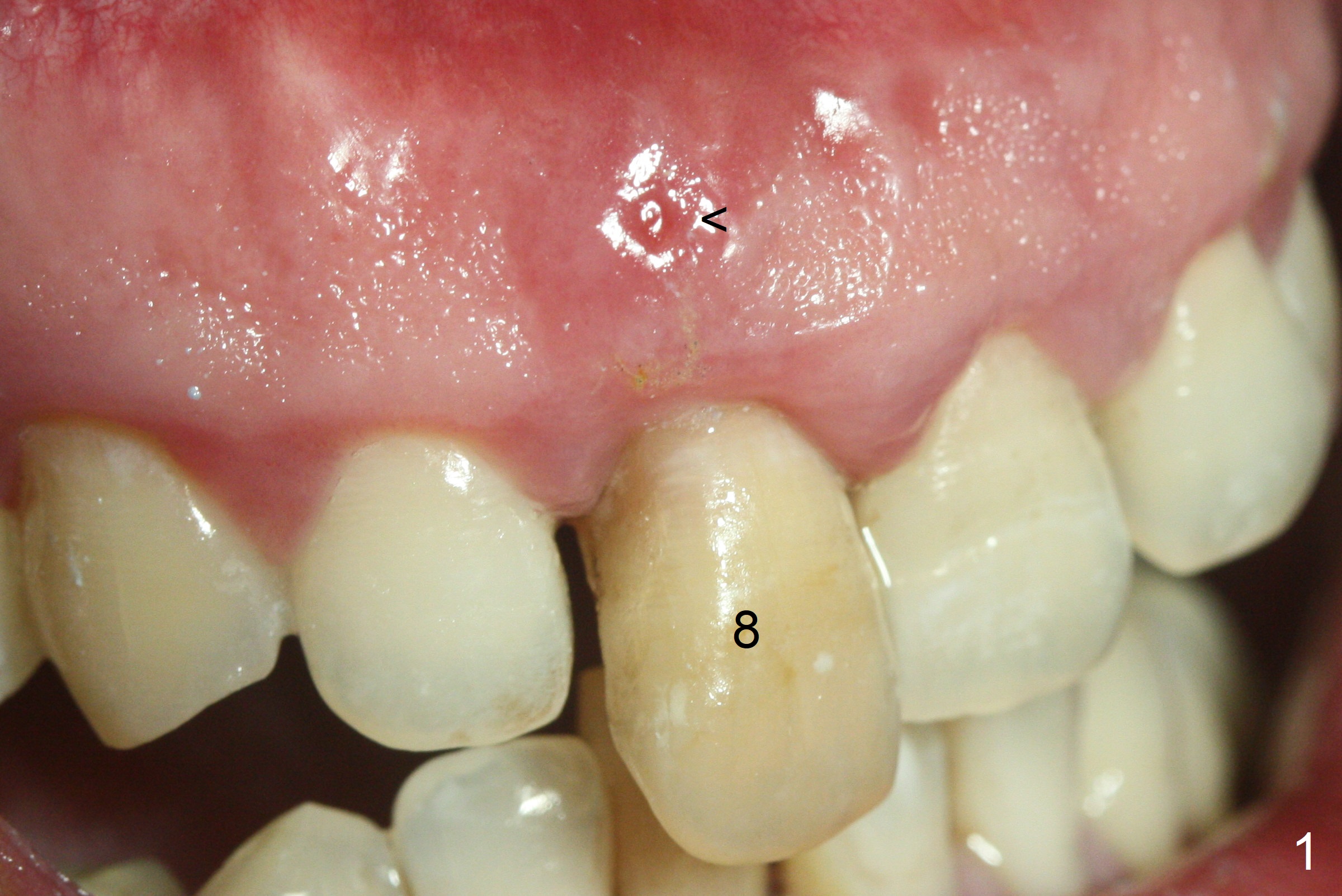
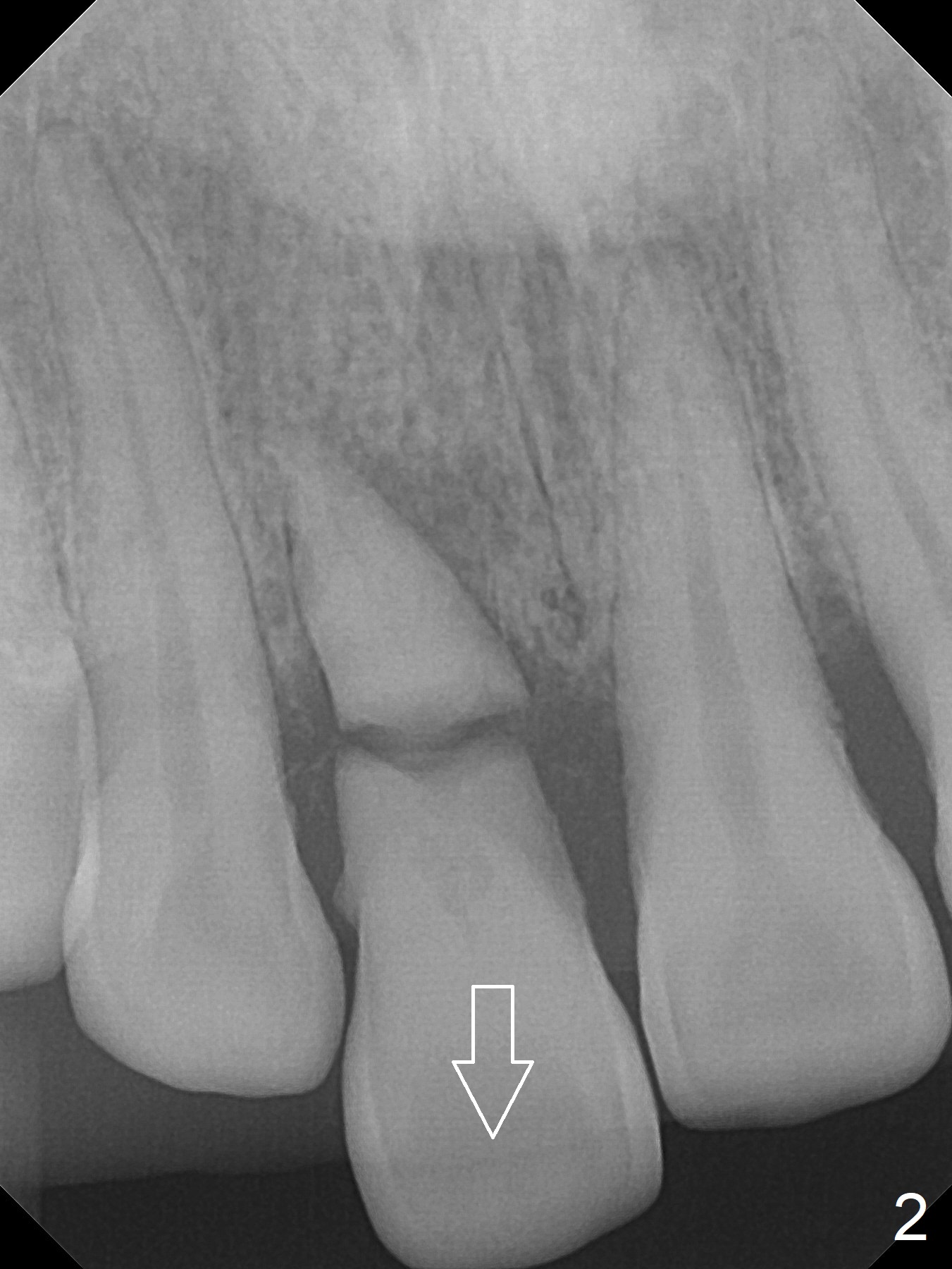
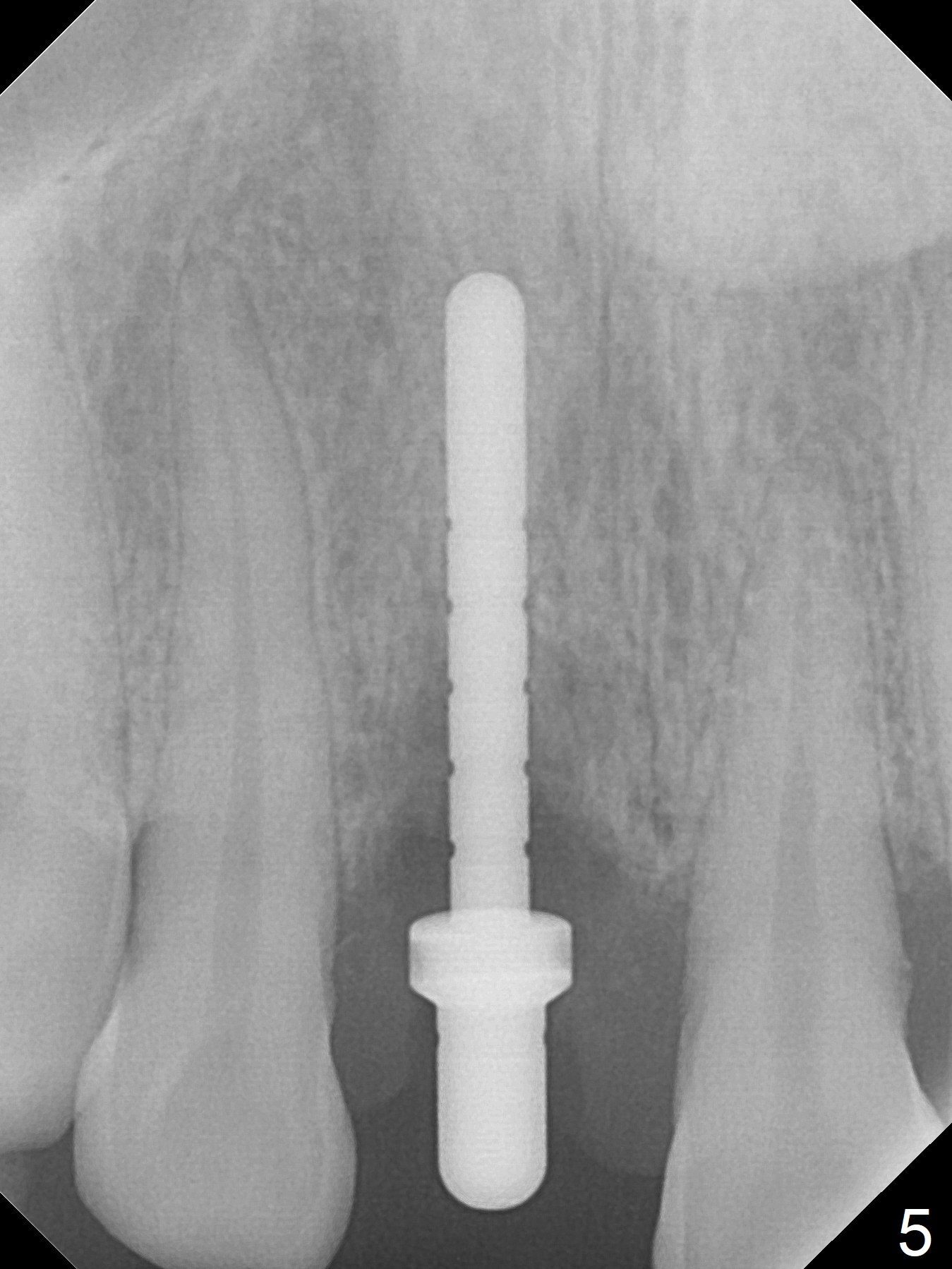
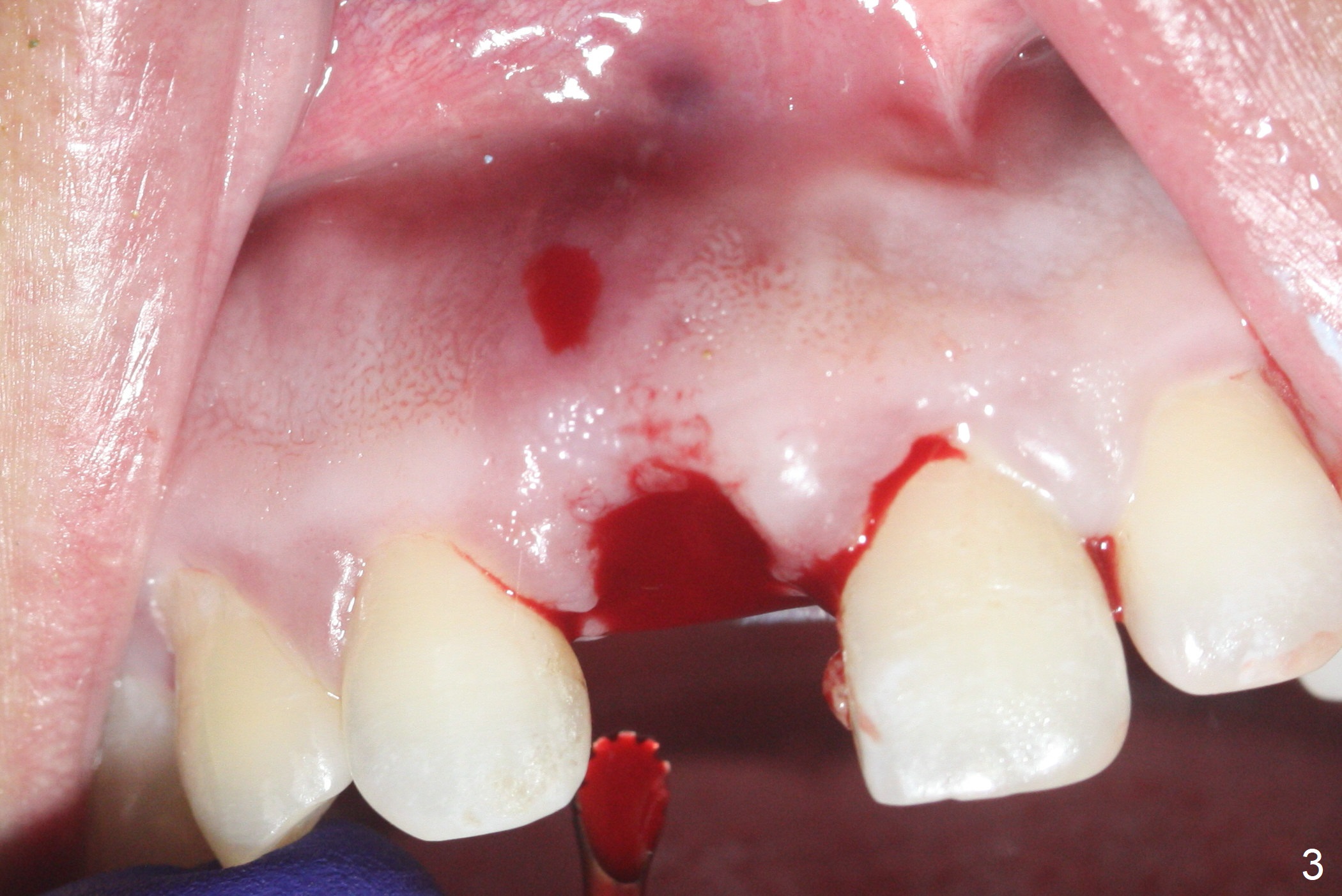
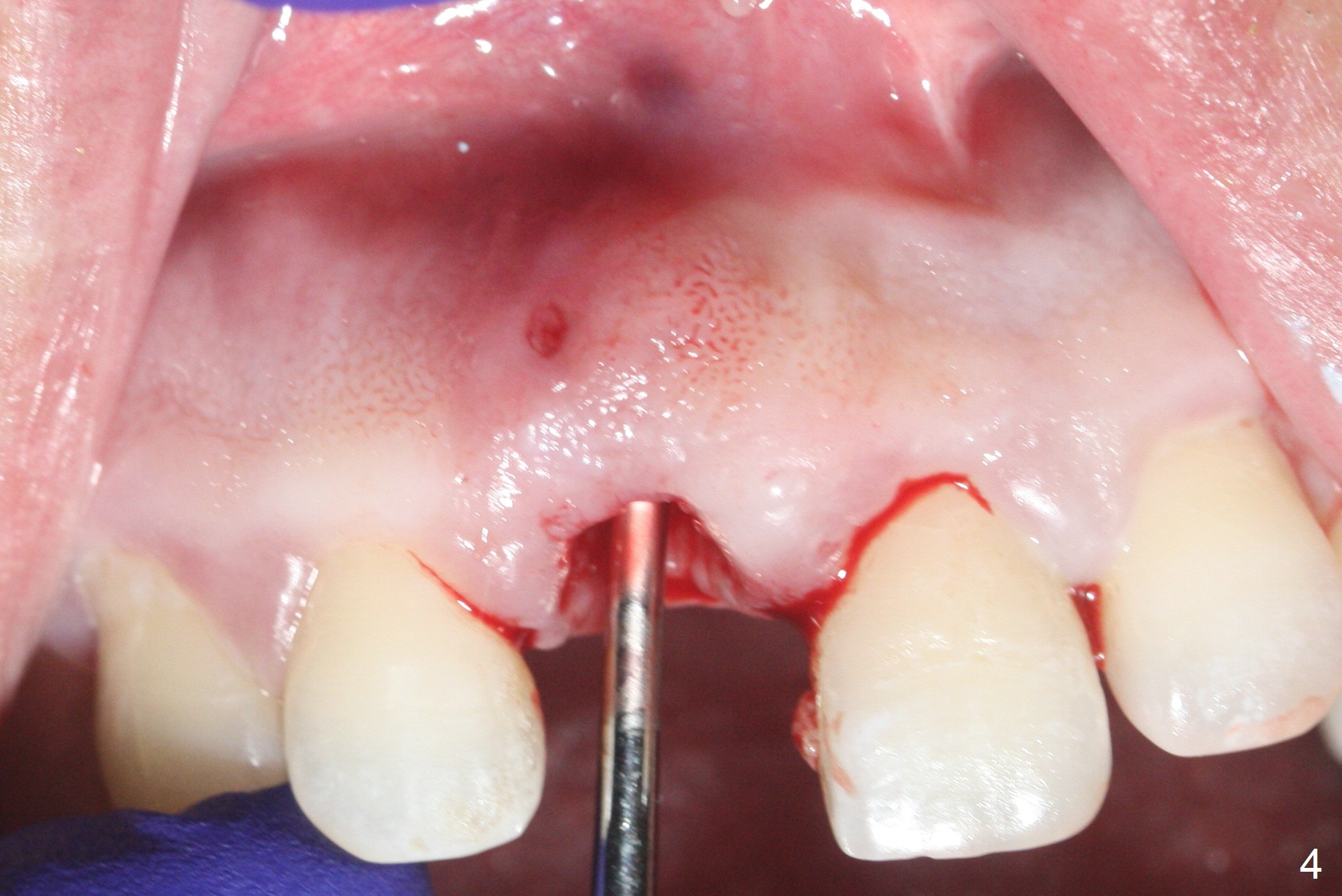
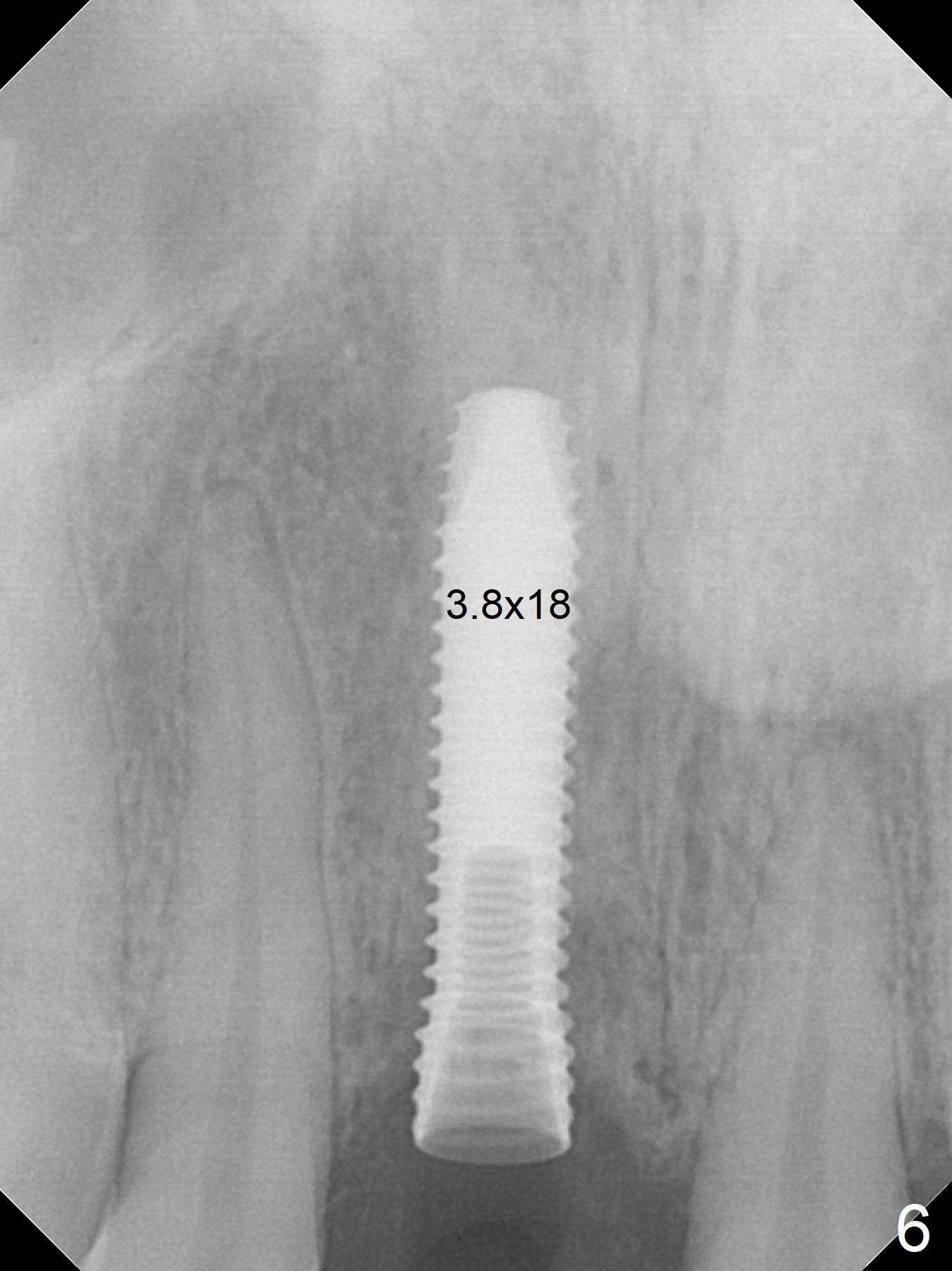
,%20Vanilla.jpg)
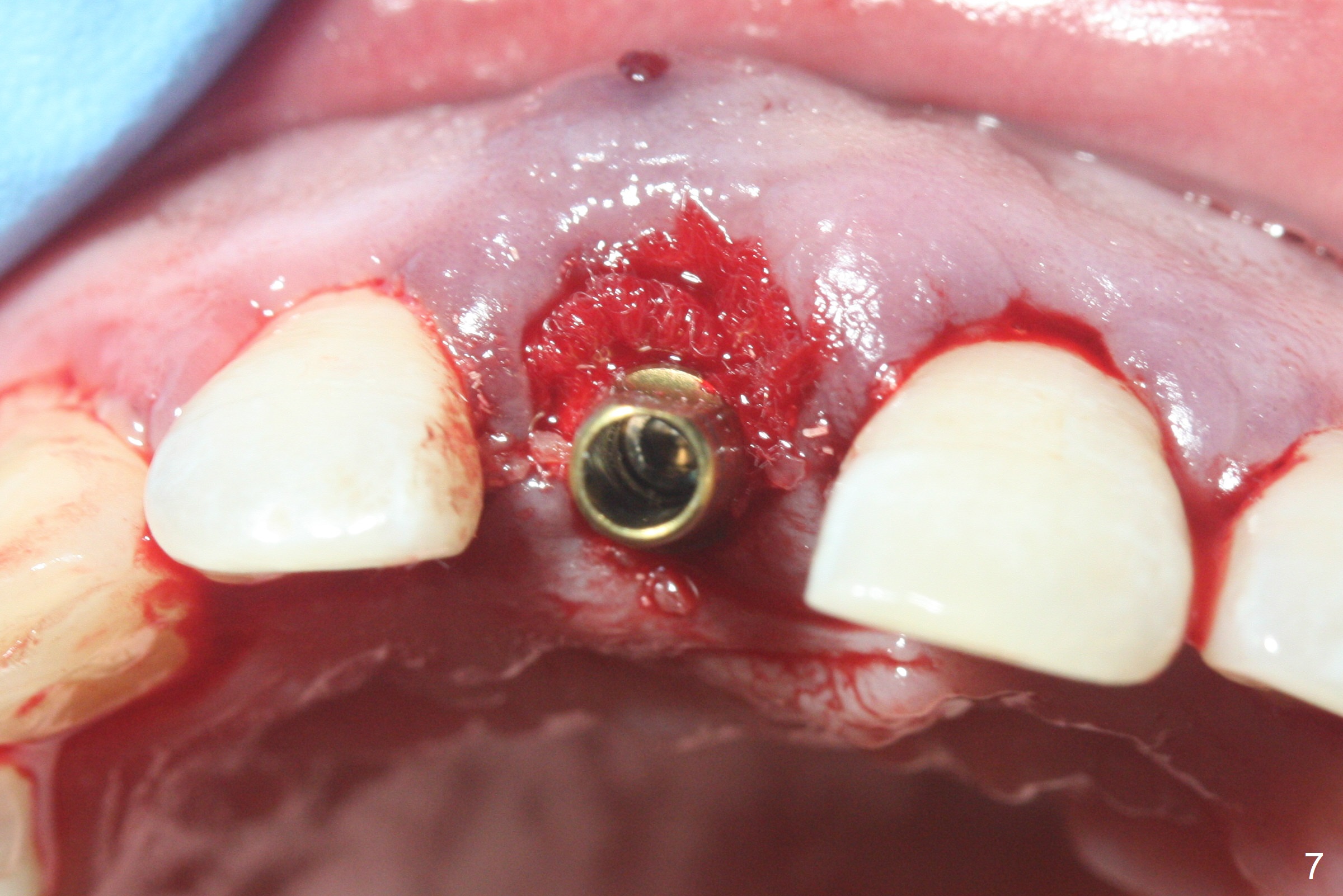
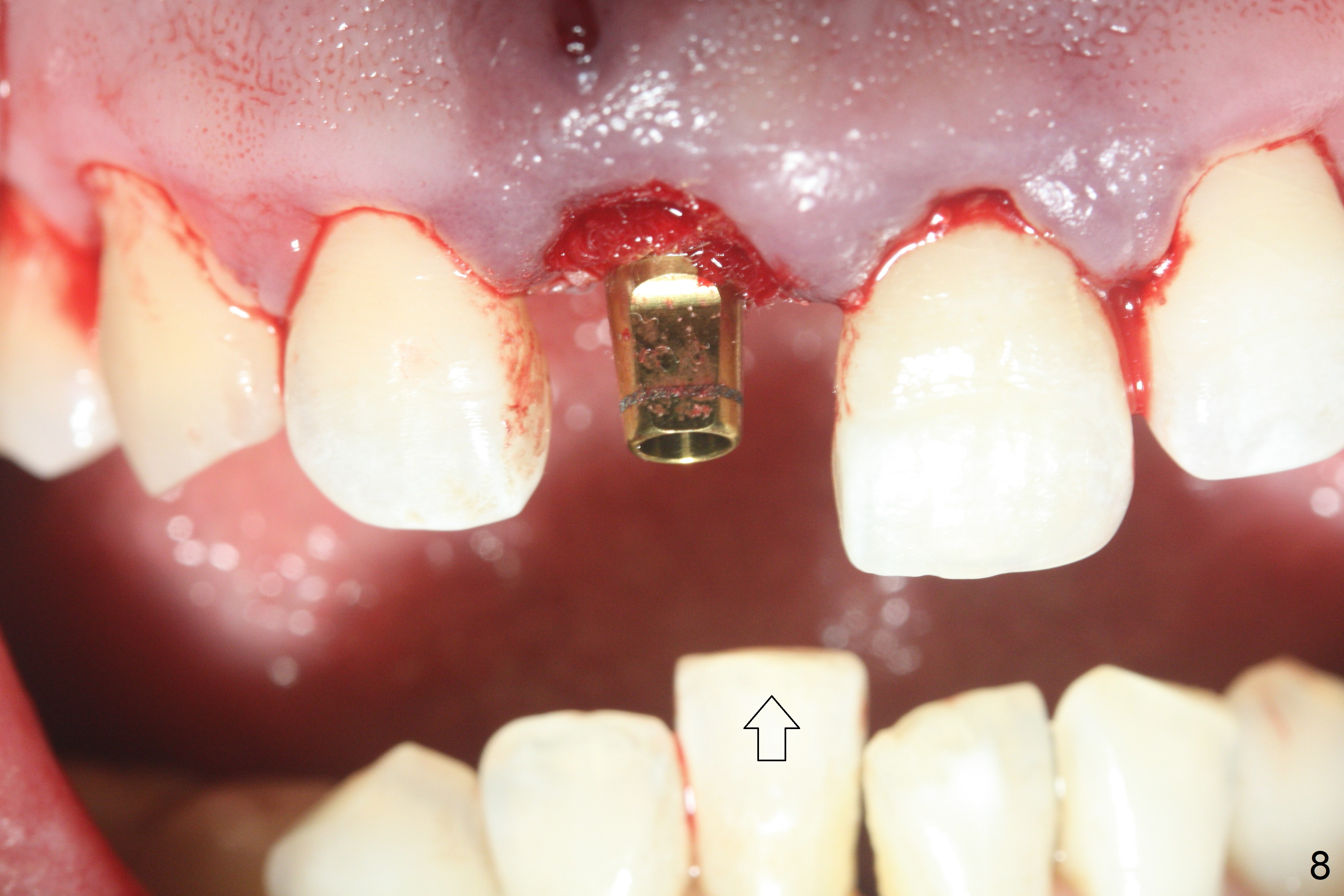
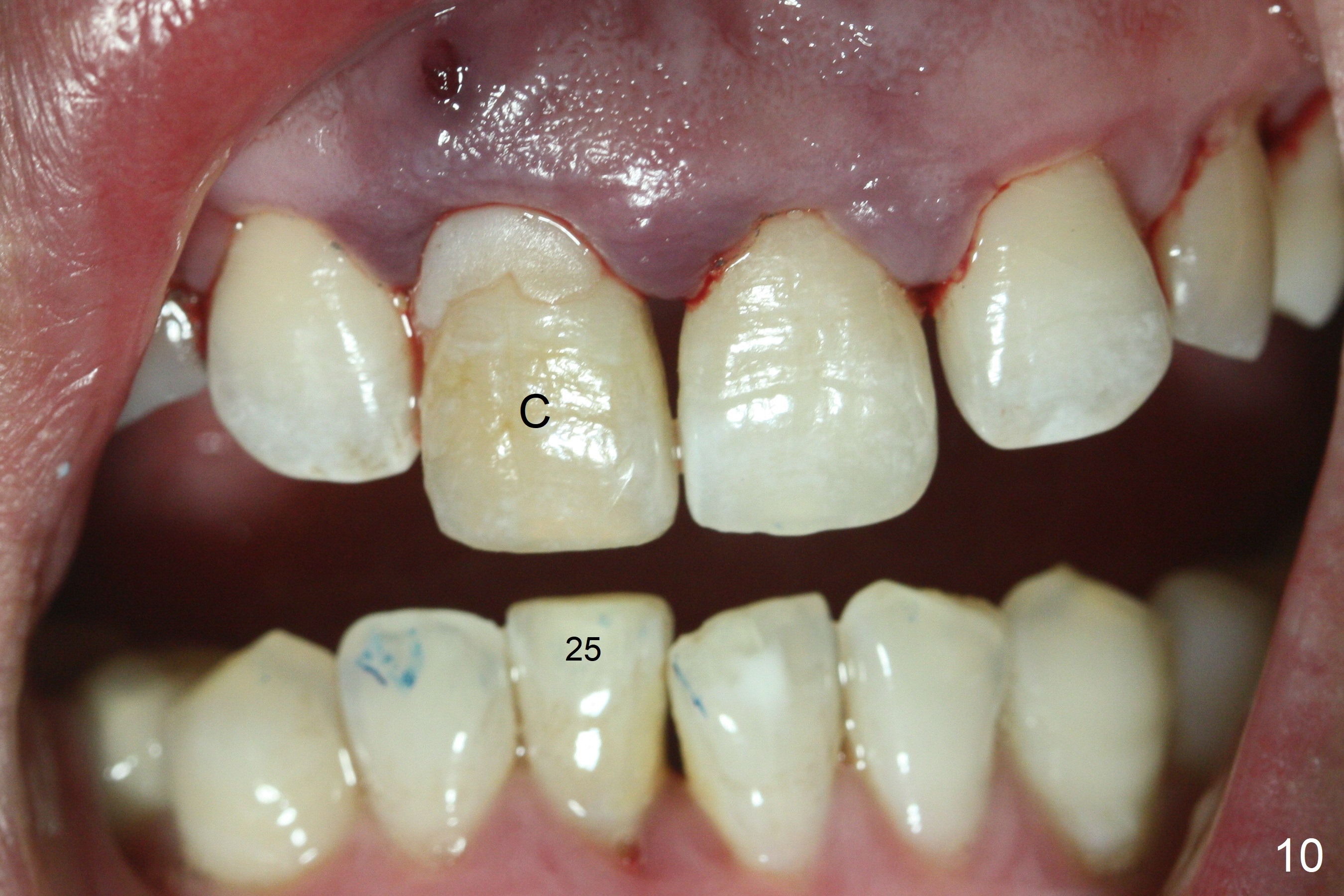
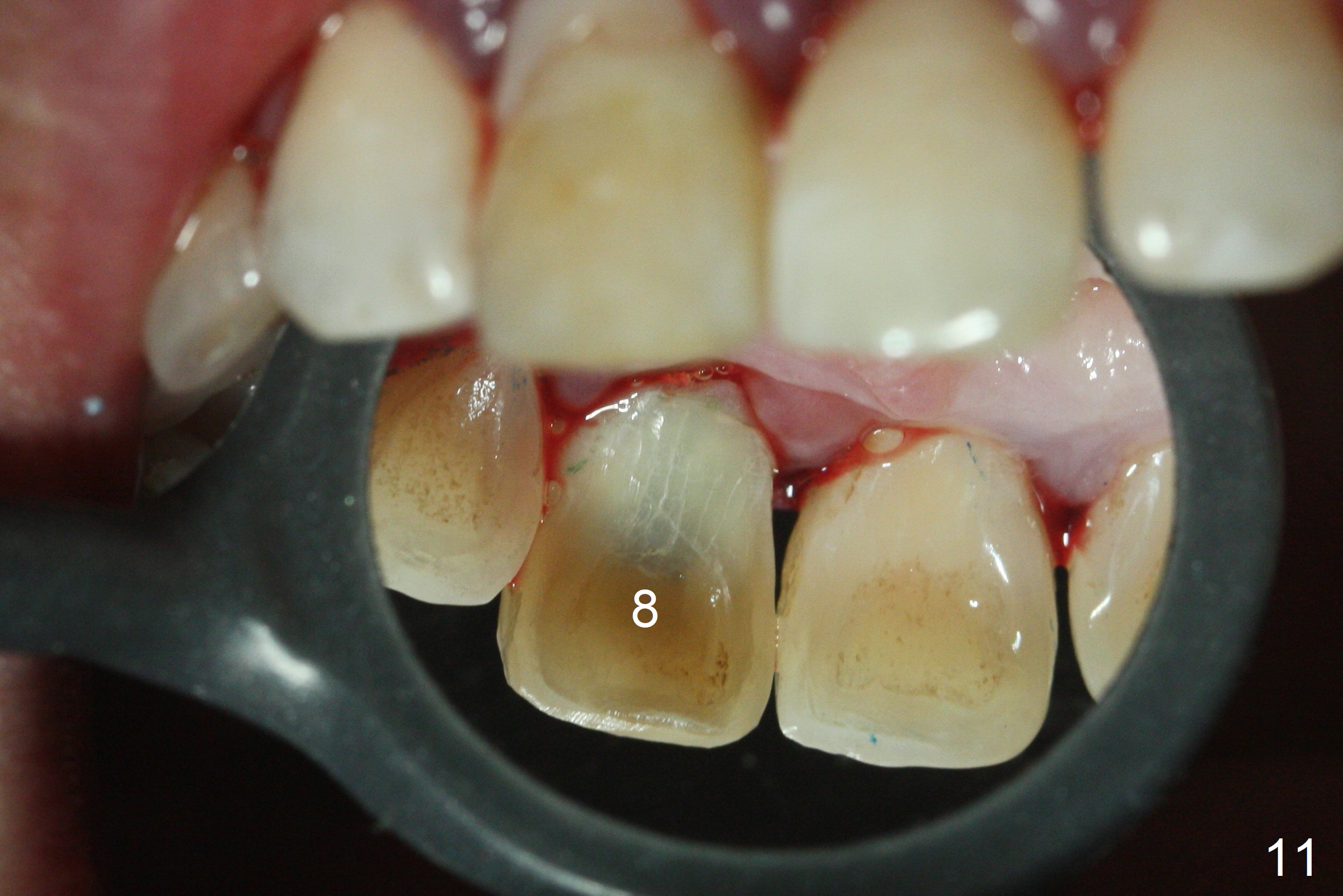
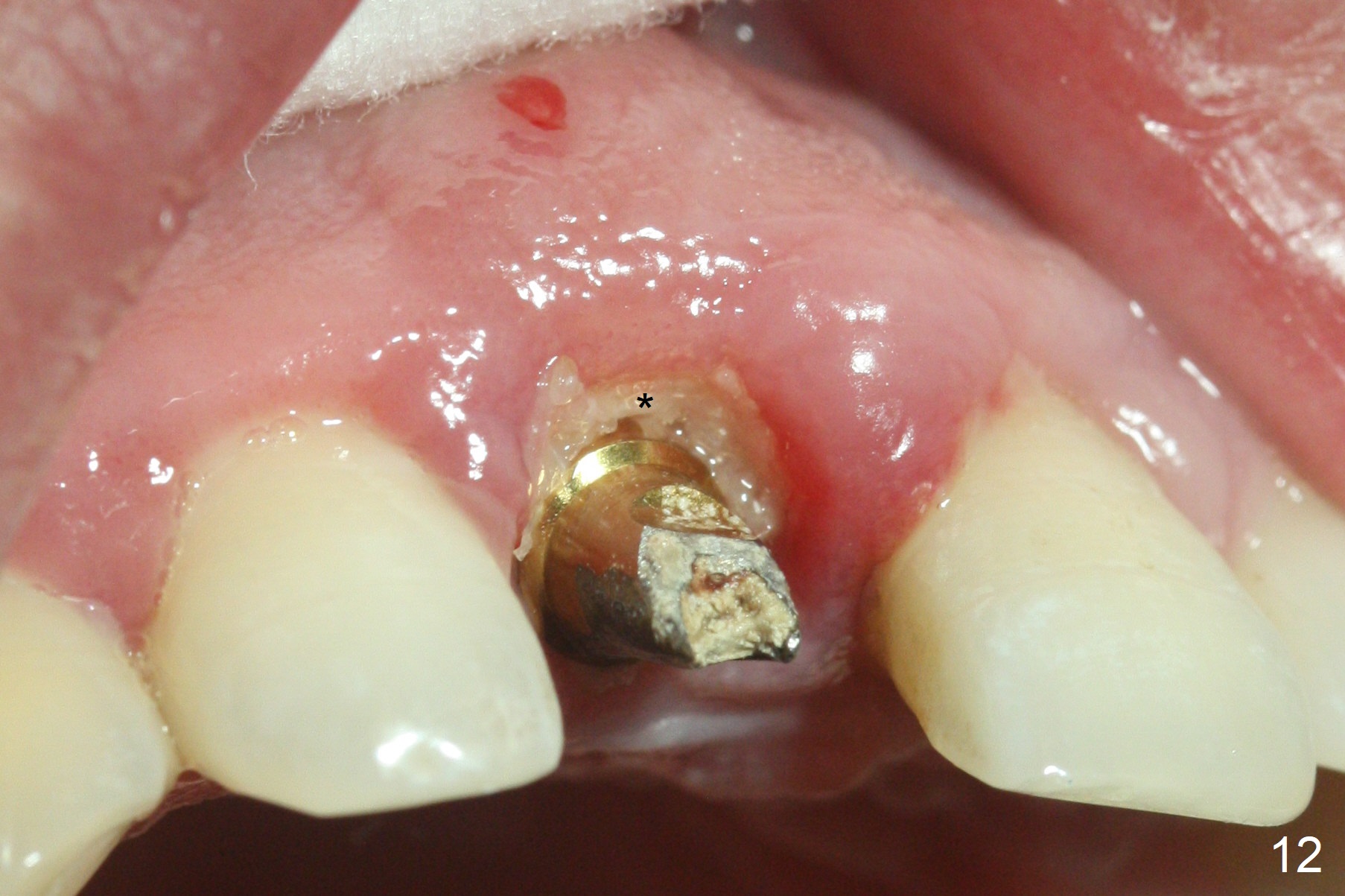
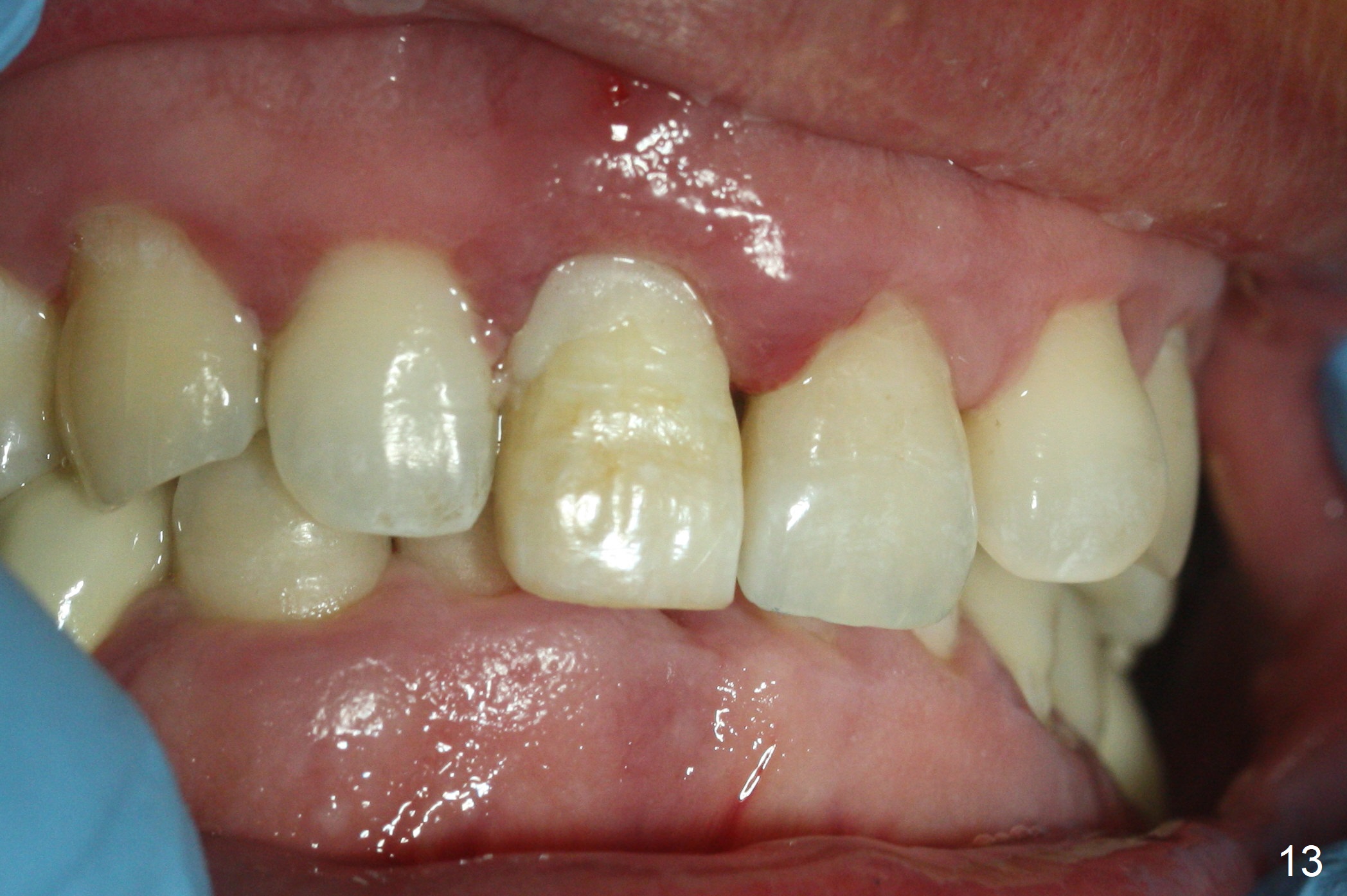
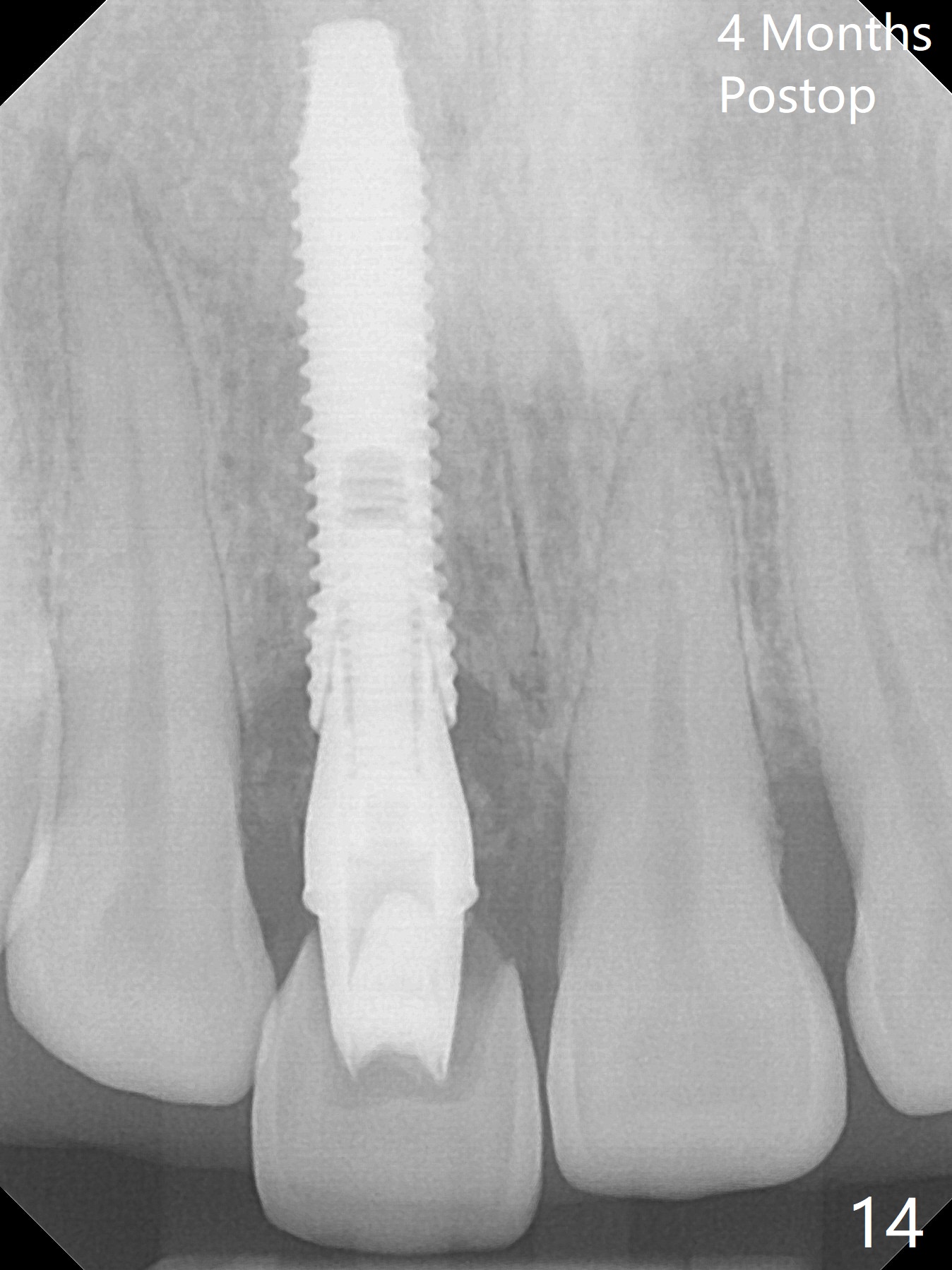
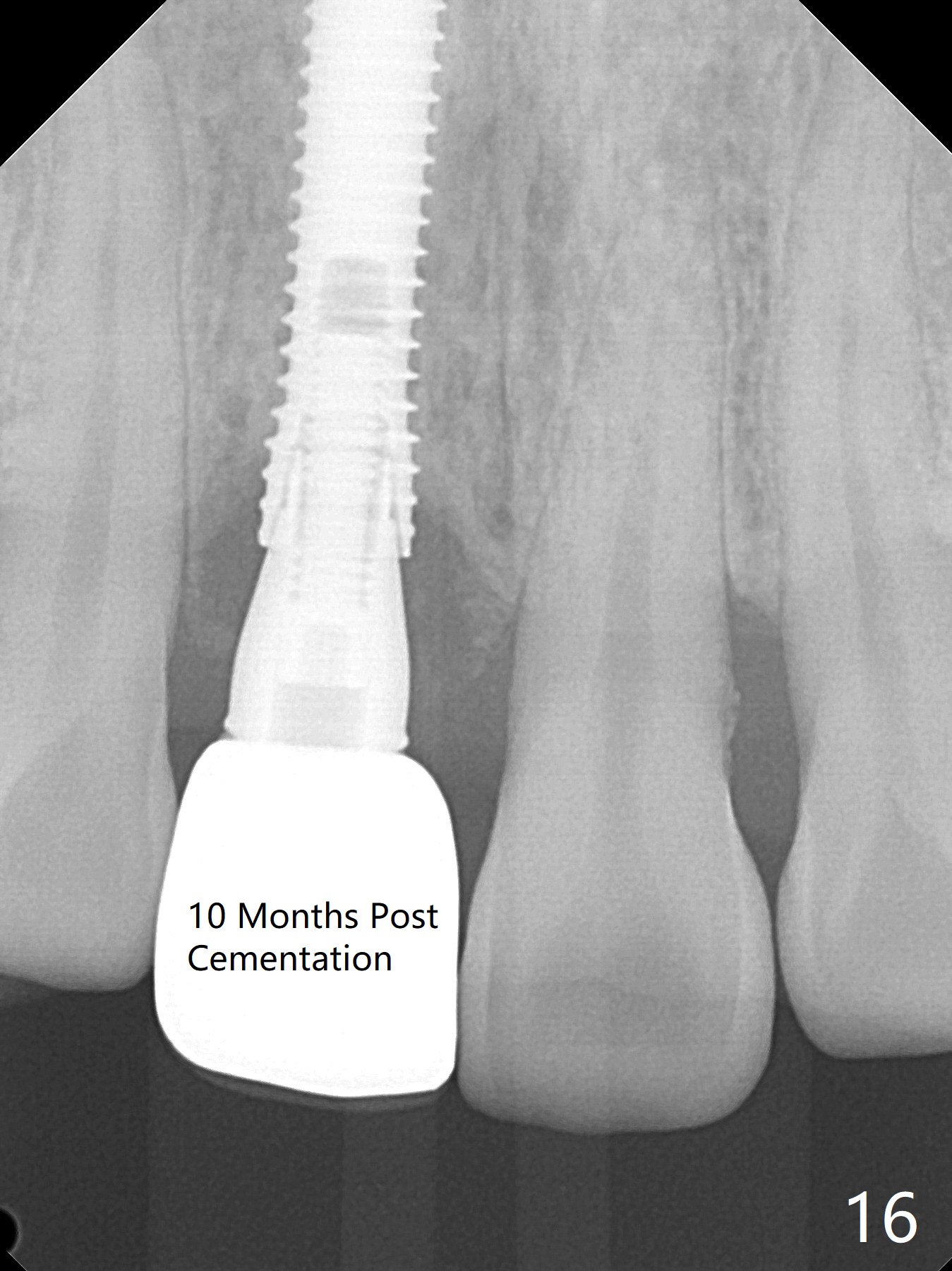
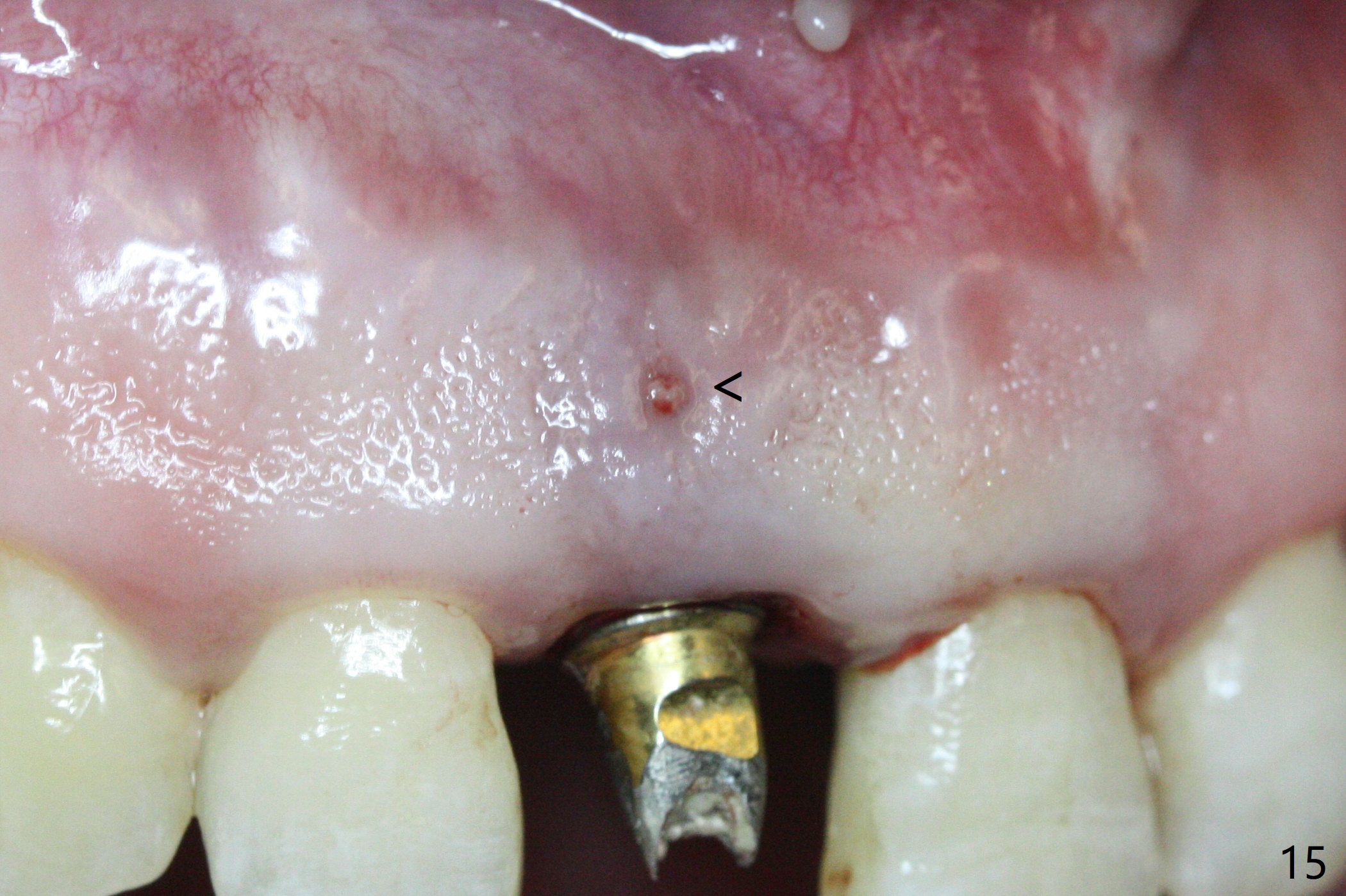
 |
 |
 |
 |
|
 |
 |
,%20Vanilla.jpg) |
 |
|
 |
 |
 |
||
 |
 |
 |
 |
|
 |
||||
Hollowed Crown for Provisional
The incisally displaced tooth #8 has a labial fistula (Fig.1 (<),2). After extraction, probing with a serrated curette (Fig.3) shows loss of the buccal plate (Fig.4). Osteotomy is initiated in the palatal slope; a parallel pin is inserted after 2 mm drill for 21 mm (Fig.5). After initial placement of a 3.8x18 mm implant with insertion torque >60 Ncm (Fig.6), the implant is placed ~2 mm more apically (Fig.9 arrow) with placement of a 4.5x5(4) mm abutment and mineralized allograft (*). When the abutment (Fig.7) occludes with the opposing dentition, the tooth #25 is found to be supraerupted (Fig.8 arrow). Following trimming of the tooth #25, the extracted crown is hollowed and fabricated as an immediate provisional (Fig.9,10 C). The latter has good adaptation palatally (Fig.11). The uncemented provisional dislodges 2 days postop; the bone graft becomes gel-like, sticking in place (Fig.12 *). After temporary cementation of the hollowed crown, the central incisors present deep bite, which makes the long implant essential for success (Fig.13). Although the implant seems to be osteointegrated (Fig.14), the labial fistula persists 4 months postop (Fig.15). The buccal fistula persists nearly 10 months post cementation, although there is no bone loss.
Return to
Upper
Incisor Immediate Implant,
IBS,
Chinese
Xin Wei, DDS, PhD, MS 1st edition 08/31/2017, last revision 06/13/2019